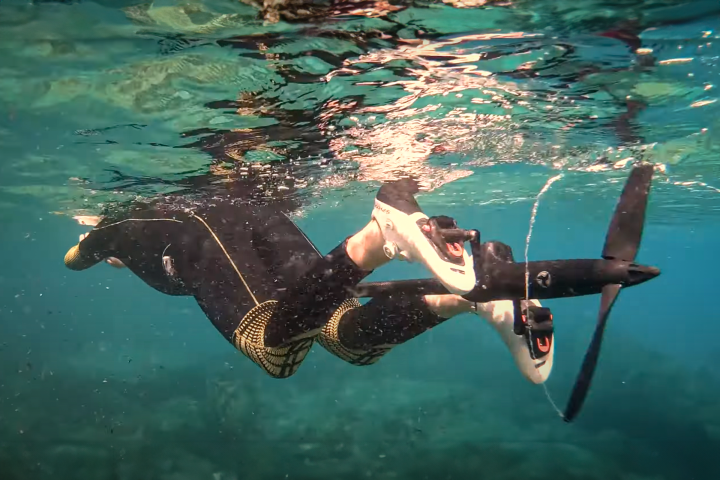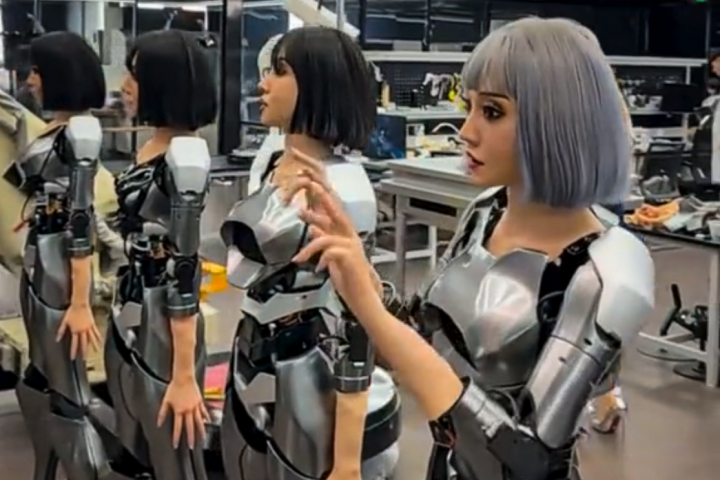Don't call it a hybrid. Christian von Koenigsegg doesn't like the term or the compromises he feels it implies. So although his all-new 1,500-hp (1.11 MW) supercar is the absolute top dog in the growing market of hyper-hybrids, he refuses to refer to it as such. When your car routes 1,100 hp and 738 lb-ft (1,000 Nm) of V8 muscle through a 700-hp electric drive (there is no gearbox), you can pretty much call your car whatever the heck you want. Koenigsegg calls it the Regera and positions it as the absolute king of the road. We call it the most insane piece of supercar engineering we've ever covered.
In Koenigsegg's home country of Sweden, "Regera" means "to reign," and Koenigsegg positions the car as a four-wheeled king that combines a never-before-seen blend of power, responsiveness and driving comfort. Unlike Koenigsegg's other hypercars, which are designed to utterly assault the road and track, the Regera is meant to offer a comfortable, luxurious ride, even in city centers, while carrying the power reserves to slingshot you to some of the world's quickest acceleration times and fastest speeds.
In designing the Regera, Koenigsegg sought to solve the perceived fundamental inefficiencies that make the concept of a hybrid a nonstarter for him. He sees parallel hybrids as too heavy due to the two independent propulsion systems at work. He admits that series hybrids offer a lighter, more integrated hybrid solution with less components, but says the inefficiency comes in the form of mechanical-electrical energy conversion losses.
Several years ago, Koenigsegg came up with his solution: an integrated gas-electric powertrain with no transmission. He believed this would eliminate energy inefficiencies while cutting out weight and complexity. With the hard work of the Koenigsegg Advanced Engineering team, he saw his vision to fruition in the form of the patent-pending Koenigsegg Direct Drive (KDD), which allows the Regera to send up to 1,500 hp (1,118 kW) and 1,475 lb-ft (2,000 Nm) of torque to the rear wheels without any gear shifting whatsoever.
The KDD is a very particular layout of 5.0-liter twin-turbo V8 engine and triple-motor electric drive. As you can see in the diagram below, there are left and right 241-hp (180-kW) electric motors mounted at the rear axle, a hydraulic coupling and a 214-hp (160-kW) electric motor mounted to the crankshaft of the combustion engine.

As Koenigsegg explains it, the two rear electric motors provide initial acceleration, allowing the car to start from standstill without help from the low gears of a transmission. These motors also provide reverse driving and deliver torque vectoring for improved handling. At about 30 to 40 km/h (19 to 25 mph), the hydraulic coupling closes, routing the output from the front ICE/motor drive (primarily the motor at this point, as the engine is still getting up to speed) to the rear wheels. The crankshaft-mounted electric motor acts as a starter, torquing the engine to full life by around 120 to 130 km/h (75 to 81 mph).
Once the engine is up to speed, the driver has the full gas-electric reservoir at his disposal, with peak 1,100-hp engine power coming at 7,800 rpm and a max engine torque of 944 lb-ft (1,280 Nm) coming at 4,100 rpm. The engine and three motors don't send their full combined 1,800 hp (1,342 kW) to the rear wheels, but the peak system output of 1,500 hp probably won't leave any driver on Earth wanting for more.
"It's the world's first car that has a combustion engine driving the wheels with no gearbox in between," Koenigsegg said at his Geneva press conference. "It just feels like you have an engine of 20 liters with super response with no need for gears. Some people might think 'I'm going to miss shifting and revving up and all of these nice things you have in a sports car,' and that is true. I guess many of you have also driven the Tesla P85D, where you have this enormous, quick, responsive electric motor that makes a two-ton car really fly and become nimble. Imagine that kind of electrical power that we also have here, with 600 kilos less weight, with 1,100 hp of combustion engine power on top of that."
We're imagining it, and it's simply gorgeous. Koenigsegg estimates that the Regera can accelerate from 0 to 62 mph (100 km/h) in 2.8 seconds, rolling forward to spike from 93 to 155 mph (150 to 250 km/h) in a mere 3.2 seconds. Looking farther down the road, Koenigsegg believes the Regera can make 0-186 mph (300 km/h) happen as quickly as 12.3 seconds, over a full second quicker than the 13.63-second world record set by Hennessey in 2013. It reckons the car can also go from standstill all the way to the near-top speed of 249 mph (400 km/h) in less than 20 seconds. Top speed is just under 255 mph (410 km/h).
While the potent power quartet of the Koenigsegg Direct Drive gets most of the credit for those numbers, also at play are the reasonably low weight and active aerodynamics package. Powerful hybrid powertrains aren't generally prized for their low weights, but Koenigsegg manages to keep the weight of the Regera just under 3,600 lb (1,633 kg). Its usual lightweight structural elements such as carbon fiber-aluminum honeycomb chassis, carbon-Kevlar body and Aircore Superlight carbon fiber wheels play a big role, and the omission of the transmission keeps the powertrain to within 194 lb (88 kg) of what the Regera would weigh with a traditional ICE and seven-speed dual-clutch transmission layout. For reference, less luxurious, track-engineered Koenigseggs of recent fame, such as the all-new Agera RS and the One:1, weigh in the 3,000- to 3,100-lb (1,361- to 1,406-kg) range.
In terms of active systems, the Regera features an active rear wing and front flaps. Active engine mounts remain soft under normal driving conditions, eating up vibration and engine noise, then stiffen at high speeds for improved response. The front and rear shocks are active in height and stiffness.
The gas-electric configuration of the Regera's powertrain isn't only useful for blistering performance. It also enables drivers to enjoy up to 31 miles (50 km) of pure-electric driving. So one can drive from the parking garage of a swank downtown apartment to the highway or track on pure-electric mode, then go absolutely full throttle from there.
Given its three power-dense electric motors, the Regera is quite a power-hungry animal. Koenigsegg feeds the beast with a 9.3-kWh, 620 V liquid-cooled battery developed in conjunction with Mate Rimac, a guy that knows a few things about powering potent electric motors thanks to his similarly insane car. The battery takes up 67 liters and weighs 254 lb (115 kg); Koenigsegg calls it the most power-dense battery pack ever developed for a road-going car. It can be charged by way of a Type 2 port behind the rear license plate holder, as well as through regenerative braking and electricity generated from the combustion engine. The car's Battery Drain Mode ensures that the battery is fully empty and ready for a complete charge upon arrival at a destination.
It may not be as smooth or sexy as a Ferrari or Aston Martin, but the Regera is truly the first Koenigsegg that sheds the hand-me-down clothes and gets some style all its own. The predictable broad, under-styled hood; large, leaf-shaped headlamps; and flat rear fascia that have adorned every Koenigsegg from the CC prototype through to the Agera RS, which debuted alongside the Regera, are all gone, replaced by Regera-specific elements. Koenigsegg has finally jumped ahead a stage in its glacially slow styling evolution.
The overall proportions with the mid-set cabin, prominent, slightly curved belt line and gaping flanks are all present, but Koenigsegg has done some serious massaging and sculpting inside the lines. The voluminous, three-dimensional front fenders give the hood a bit more personality, and the horizontal headlamps enhance the new look. You may notice a bit more twinkle in those newly shaped light clusters, and that's because they feature randomly scattered daytime running LEDs designed to emulate the look of a constellation of stars.
Out back, the usual flat, broad platform is tapered, angled and thinned into something new. The massive diffuser and central electrical system exhaust flanked by vertical titanium fishtail pipes add more distinction. The new active, top-mounted wing is derived from the active wing on last year's megacar, the One:1. The new wing retracts neatly into the rear body when not needed, leaving only its carbon fiber arms as evidence of its existence.

A tap of a smartphone or remote control opens up the interior. Koenigsegg calls the Regera the first fully robotized car because the hood, trunk and both rotating doors open and close automatically. The remote activated system is powered by the same actuation hardware used in the active aerodynamics and suspension systems.
Assuming you're not put off by loads of exposed carbon fiber, the interior is as refined as the exterior. The wraparound windscreen helps frame a cozy, two-seat grand touring cocoon dressed in warm, brown leather and metallic trim. Present is the tablet-sized infotainment touchscreen that's become obligatory in high-tech electric/hybrid sports cars. In this case, it's a 9-in touchscreen-operated system that runs Apple CarPlay and drives audio through a premium sound system. Other interior technologies and comforts include 3G/Wi-Fi connectivity, eight-way adjustable memory foam seats, and a front, rear and interior camera system.

Koenigsegg intends to finish Regera development and testing in the coming months, beginning production by the end of the year. It plans to build 80 cars over a five-year period, and the first buyer can expect to take delivery sometime around next March. Like the Geneva show car, each car will include a removable hard top that stows away in the hood cargo compartment. Pricing wasn't addressed at its press conference, but both the automotive press and general news sources like CNN are reporting a figure around US$1.9 million.
Source: Koenigsegg






























